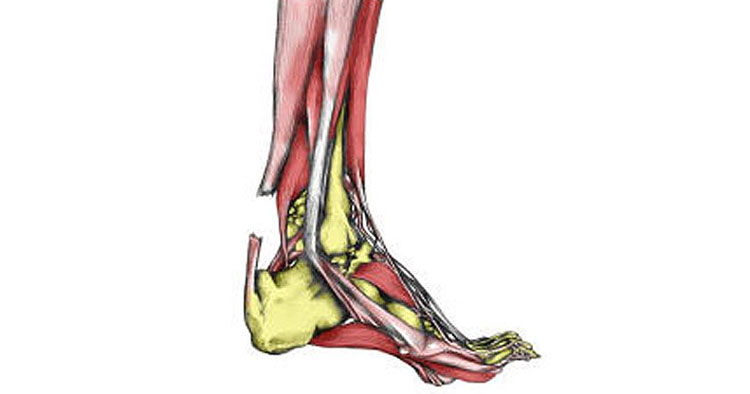Muscle Pain and Tendinopathy, Sports Injuries and Management, Surgical Procedures and Protocols
The Assessment And Management Of An Achilles Rupture
Signs Of An Achilles Rupture
An Achilles rupture may seemingly come from nowhere and yet other times there may be a history of previous achilles tendinopathy and/or the prior use of cortisone injections into the tendon. On assessment an achilles rupture may present with some, or all of the following characteristics in the history of the injury and physical assessment of the leg:
- A sharp pain at the moment of rupture, sometimes associated with an audible “pop” or “crack”.
- Following rupture the individual will have an inability to perform a heel raise and often walk with an impaired gait.
- Commonly significant swelling is present in the back of the heel area.
- There is often a palpable “gap” in the tendon when compared to the other side that has a complete feeling tendon on palpation.
- The affected side will demonstrate a positive “squeeze test” known as the Simmonds-Thompson test. The “squeeze test” is a special test for achilles rupture, the test is performed whereby the individual is positioned lying face down on the treatment table with the foot hanging off the end of the bed and the calf muscle is squeezed by the assessing practitioner. When performing this test to the uninjured limb the foot will point into plantarflexion when the calf muscle is squeezed, however following an achilles tendon rupture the foot will subsequently not move when the calf muscle is squeezed (considered to be a positive squeeze test) indicating the achilles tendon has been ruptured. .
- There may also be increased passive dorsiflexion of the ankle when stretching the foot up towards the shin bone, as the normal resistance to this movement offered by the achilles tendon has been lost once ruptured.
Early Detection And Treatment Following An Achilles Rupture Gives The Best Outcomes
Ideally achilles rupture is fairly easy to spot and diagnose without the need for any imaging to confirm the diagnosis. However sometimes other conditions may can have similar presentations to that of an achilles tendon rupture confusing the diagnosis. Some of the differential diagnoses to achilles tendon rupture include:
- achilles tendinopathy,
- calf muscle tear,
- tibialis posterior tendinopathy.
Achilles ruptures can be classified into a number of types according to the severity of the tear and degree of tendon retraction. Resulting orthopaedic management will depend on the severity and chonicity of the tear. Generally the longer an achilles rupture has been present for and walked around on following injury, the greater the degree of tendon retraction. As a result in the chronic situation it is more likely any surgical procedure becomes more challenging and post surgical rehabilitation becomes more draw out attempting to achieve a desirable outcome and a return to normal pre-injury activity levels and capacity.
Surgical Repair Verses Non Surgical Management Of Tendon Rupture
Currently the orthopaedic population aren’t in unison regarding the ideal management of an acute achilles rupture and there is some debate around what is the best management. With any surgical procedure there are associated risks and as well as this there are typically also financial differences for the individual to consider between taking a surgical verses non-surgical management approach. Surgical procedures with acute tendon ruptures involve re-approximating the torn ends of the tendon and following surgery patients can generally return to running somewhere between the 6 and 9 months mark. It is generally agreed that in terms of recovery that surgical treatment is faster, that is with reference to less down time after the injury which is achieved through the development of stronger tendon healing sooner. The key for specialists lies with balancing the risks of surgical techniques, non surgical management techniques and rehabilitation protocols when trying to achieve a fast recovery with reduced risk of re-rupture:
- Non-operative verses surgical repair for acute ruptures.
- Minimally invasive surgery verses traditional open surgical repair.
- Early functional rehab protocols verses a more traditional and slower rehab approach.
Given that every Achilles rupture, the accompanying individual circumstances and goals are unique it is important to discuss the options with your chosen orthopaedic surgeon regarding the best management with regard to your specific situation. This will help ensure an optimal outcome which is clearly the goal.
Disclaimer: Sydney Physio Clinic does not endorse any treatments, procedures, products mentioned. This information is provided as an educational service and is not intended to serve as medical advice. Anyone seeking specific advice or assistance regarding Achilles Rupture Assessment And Management should consult his or her orthopaedic surgeon, general practitioner, sports medicine specialist or physiotherapist.


